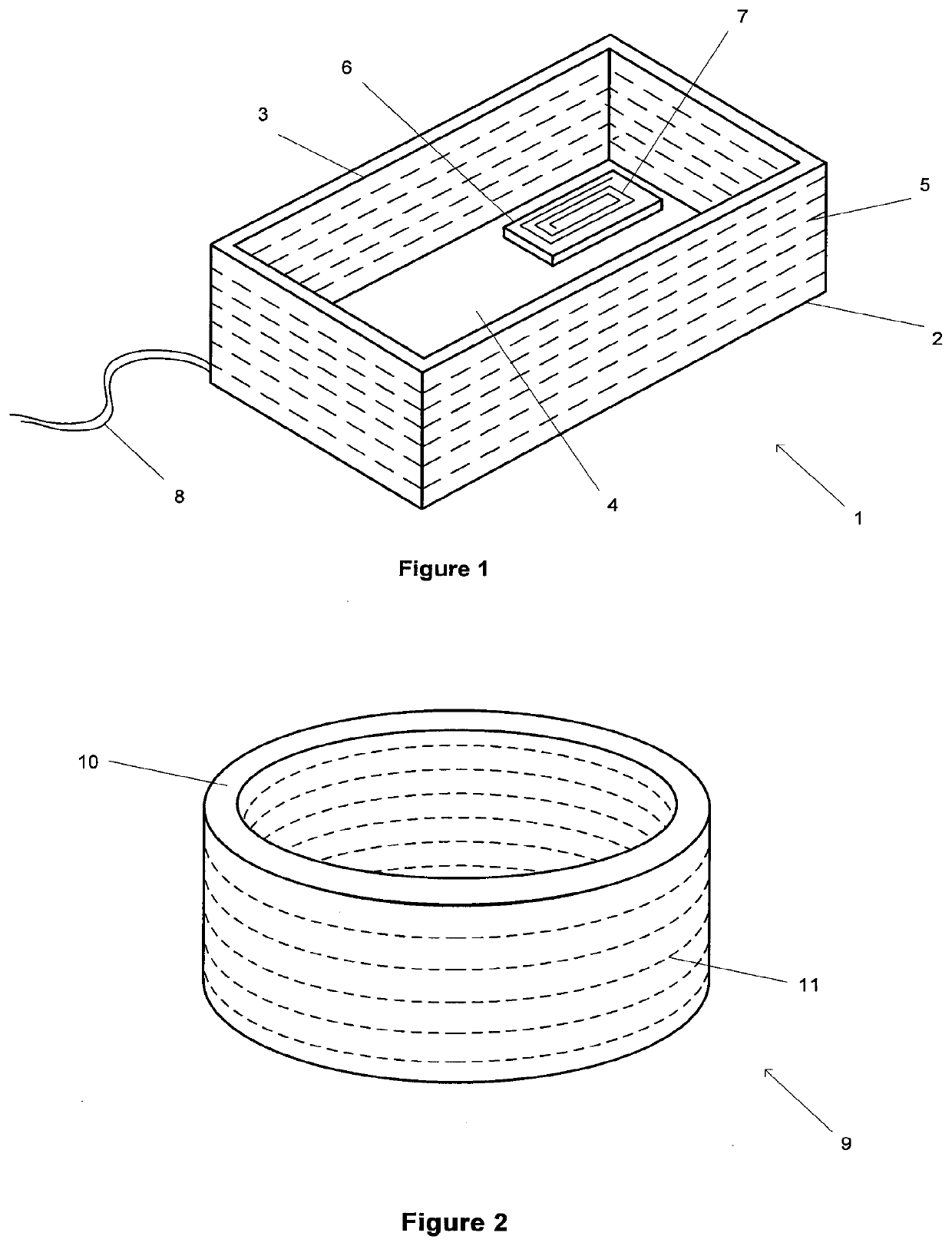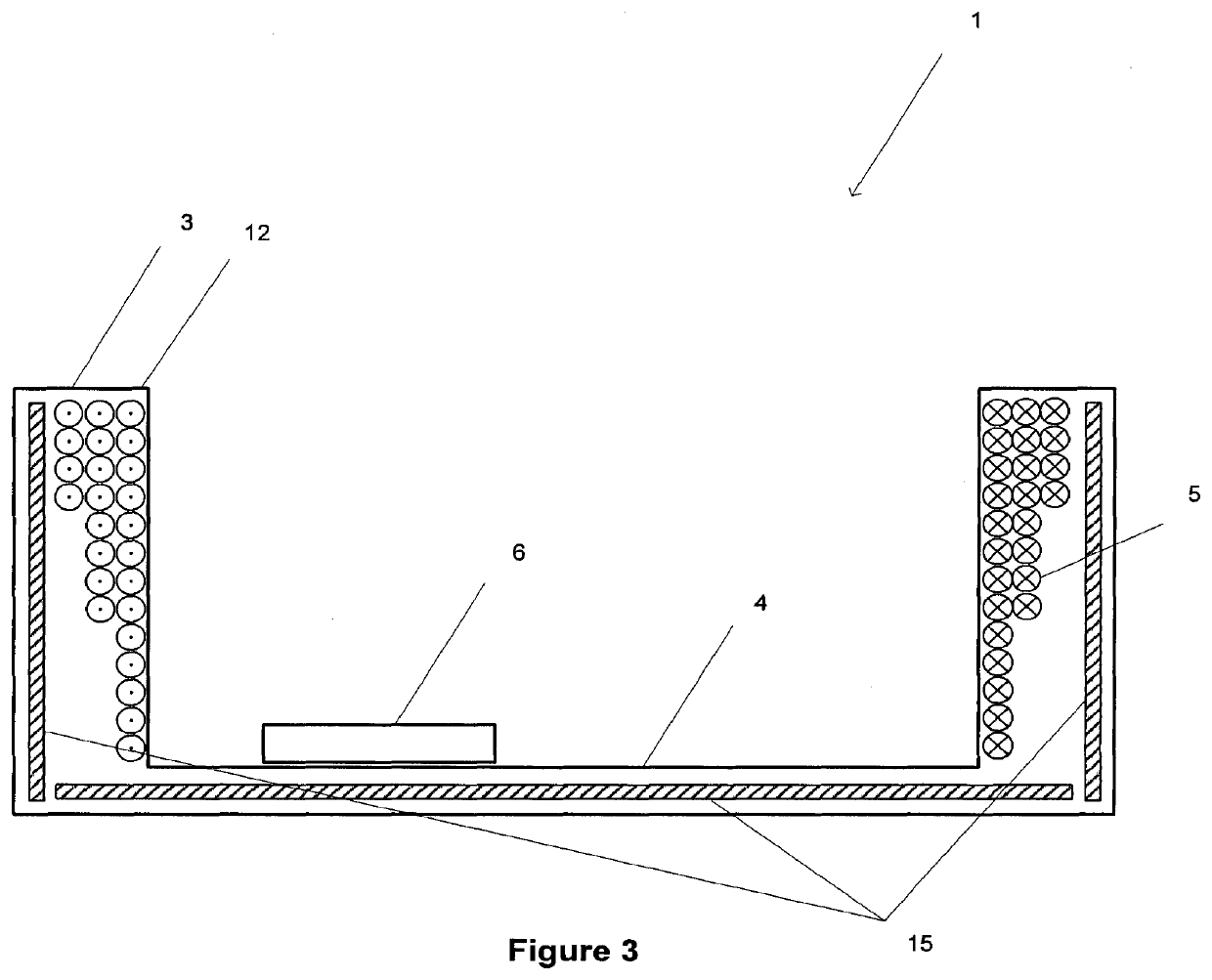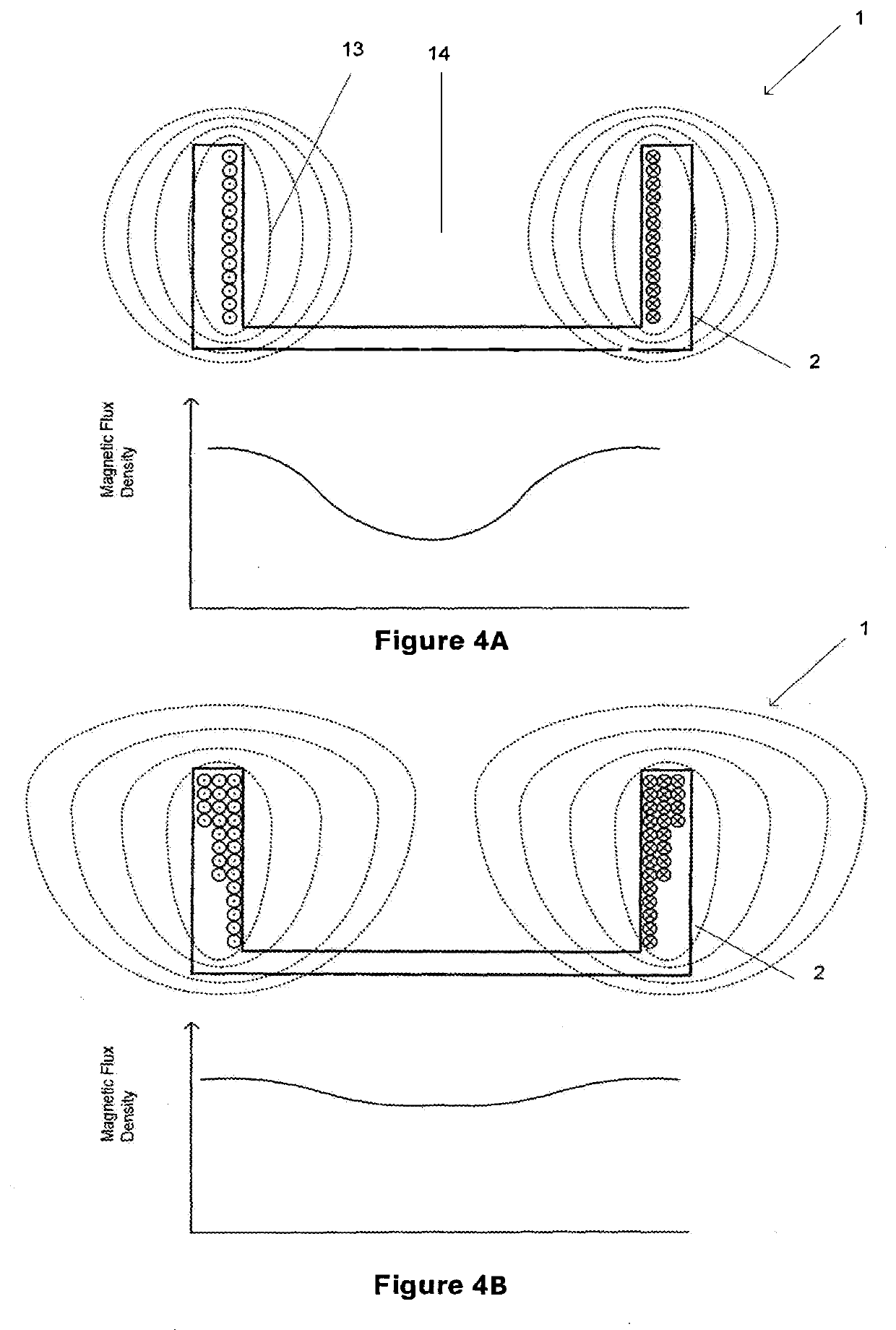Transmitter for an Inductive Power Transfer System
a technology of inductive power transfer and transmitter, which is applied in the direction of transformer/inductance magnetic cores, inductances, circuit arrangements, etc., can solve the problems of user participation, uncomplicated charging and powering of devices, and requiring precise alignment to undermine on
- Summary
- Abstract
- Description
- Claims
- Application Information
AI Technical Summary
Benefits of technology
Problems solved by technology
Method used
Image
Examples
Embodiment Construction
[0023]Coil Arrangement
[0024]Referring to FIG. 1, there is shown a transmitter 1 for an IPT system according to an embodiment of the present invention. The transmitter takes the form of a charging enclosure 2 with sidewalls 3 and a base portion 4. The transmitter includes a coil 5 that generates a time-varying magnetic field inside the enclosure. A device 6, placed inside the enclosure, includes a receiver coil 7, which inductively couples with the time-varying magnetic field and produces a current that can be used to charge or power the device. The coil is contained with the sidewalls of the enclosure, and is wound about the perimeter of the enclosure, coplanar with the base portion, as shown by the dashed lines in FIG. 1.
[0025]The transmitter 1 is connected to a suitable power supply 8, and drive circuitry (not shown) is configured to drive the coil so that it generates the magnetic field. The drive circuitry is configured such that the coil 5 generates a time-varying magnetic fiel...
PUM
| Property | Measurement | Unit |
|---|---|---|
| magnetic field | aaaaa | aaaaa |
| thickness | aaaaa | aaaaa |
| height | aaaaa | aaaaa |
Abstract
Description
Claims
Application Information
 Login to View More
Login to View More - R&D
- Intellectual Property
- Life Sciences
- Materials
- Tech Scout
- Unparalleled Data Quality
- Higher Quality Content
- 60% Fewer Hallucinations
Browse by: Latest US Patents, China's latest patents, Technical Efficacy Thesaurus, Application Domain, Technology Topic, Popular Technical Reports.
© 2025 PatSnap. All rights reserved.Legal|Privacy policy|Modern Slavery Act Transparency Statement|Sitemap|About US| Contact US: help@patsnap.com



